Innovators
Walter Isaacson, a biography writer, reveals the story of the people who created the computer and internet. It is a standard history of digital revolution and an indispensable guide to how innovation was birthed. He describes the talents that allowed confident entrepreneurs to turn their visionary ideas into a disruptive leap, why some succeeded and why some fail.
The book started with a genius named Ada Bryon, the daughter of Lord Bryon. She was tutored in math which she further nurtured herself in adulthood and also studied art. She had a burning passion for one and felt the other helped discipline herself. She soon met Charles Babbage, a science and math whiz who invented the difference engine, the giant calculating machine. Soon, Ada started using her sense of art and mathematical ability to expand upon an improved version of the difference engine, the analytical engine. This machine would be able to process different problems and even switch between what to solve on its own. When translating a transcript of Babbage’s description, Ada added her own notes which envisioned the modern computer. Mostly, she described computer as we know them, Versatile general-purpose machine. Sadly, Babbage’s machine was never invented, and he died in poverty. Ada got married to William King who later became the Earl of Lovelace which led to her being known as Ada Lovelace.
Another group of genius’ was Eckert and Mauchly who served as counterbalances for each other making them typical of many digital-arts leadership duos. Eckert drove people with a passion for precision while Mauchly tended to calm them and make them feel loved. Eckert conceded that neither could have done it alone. In 1946, they both formed their commercial business that created the next big computer maned UNIVAC, which became a celebrity on election night in 1952 by predicting the winner early. With Grace Hopper, the first workable compiler came into existence. She allowed ordinary folks to write programs in something that looks like English. She started the open-source approach by sending her workout for others to improve and lead the creation of COBOL, the first cross-platform language for computers.
The next prominent actor on our stage wasn’t a single player but a team assembled at AT&T Bell Labs. By bringing theorists and engineers who had vision and passion, they set the stage for the development of the solid state device known as the transistor. The three players who earned the Nobel prize for this discovery were William Shockley, Walter Brattain and John Bardeen Brattain. Bardeen produced the first crude transistor in 1947 and Shockley produced an improvised version soon after. It wasn’t long before transistors were replacing the vacuum tubes in radios and finding their way into computers.
Other recognized players in this book include John Von Neumann, a Hungarian-born mathematician. He contributed expressly to figuring out how to store a program in computer memory. He also figured out how to make a computer modify its program based on the results it was getting. Robert Noyce led a team that made a better and more efficient microchip. The idea of a microchip was to place multiple devices like transistors on the same piece of silicon and was brought into existence by two major companies. Jack Kilby led the first team. Kilby’s product featured gold wires connecting the device while Noyce’s chip laid down a grid of copper on the chip to connect the chips. The race was to make microchips smaller, faster, cheaper and more powerful. Ultimately, both companies worked it out so they could benefit. Kilby finally received the Nobel prize in 2000 while Noyce died in 1990. Tim Berners Lee created the necessary tools needed to bring his vision to life. His vision was to create a single global web of information which led him to use hypertext to connect one document on one computer to another elsewhere on the internet.
The final story in this book involves two graduate students from Stanford who were both rejected by MIT. While Larry Page and Sergey Brin’s Google search engine wasn’t the first of its kind, it did become most famous.
This book is full of people who stood at the time of intersection of the arts and science and made their contributions.
THE BIG THREE – KEY POINTS
Key point #1: Innovation is rarely one single individual’s effort as it’s based on collaboration integration and incremental improvement
Key point #2: These innovators were willing to share their ideas, thoughts and work with people that make them significant
Key point #3: Progress doesn’t happen overnight or behind closed doors. It’s only when people come together to share, collaborate, create and negate that ideas will amount to something that can change the world.
